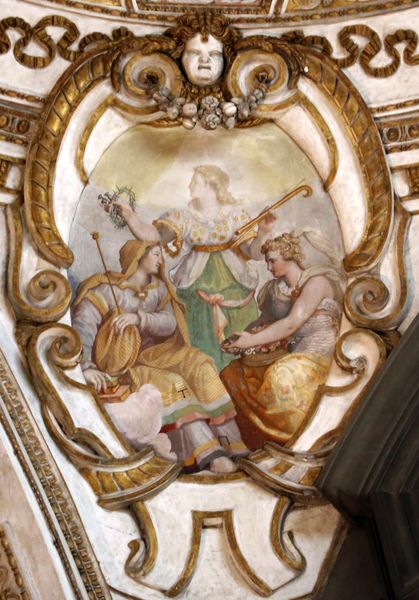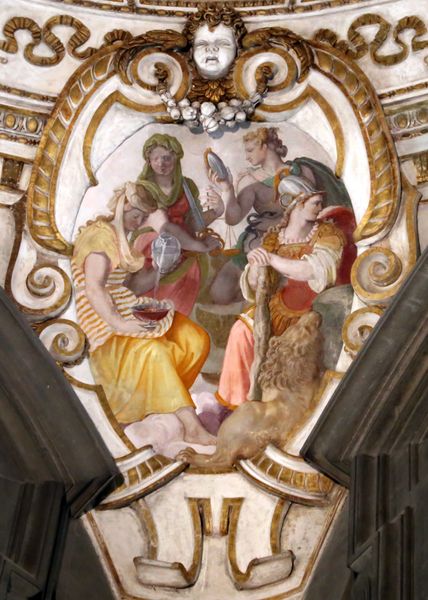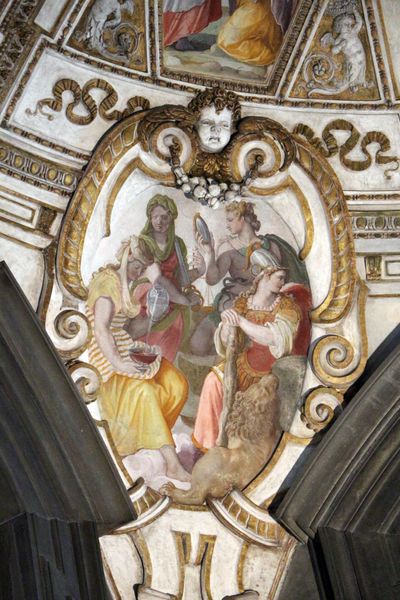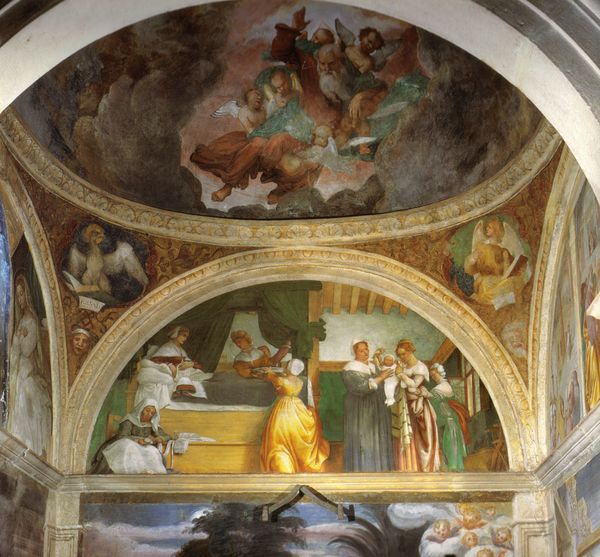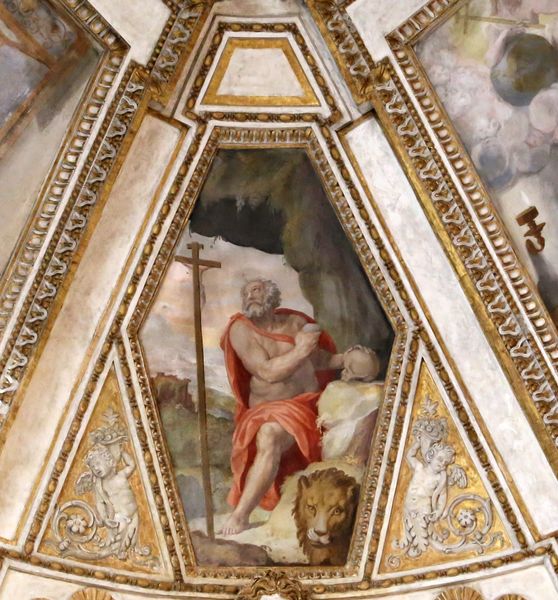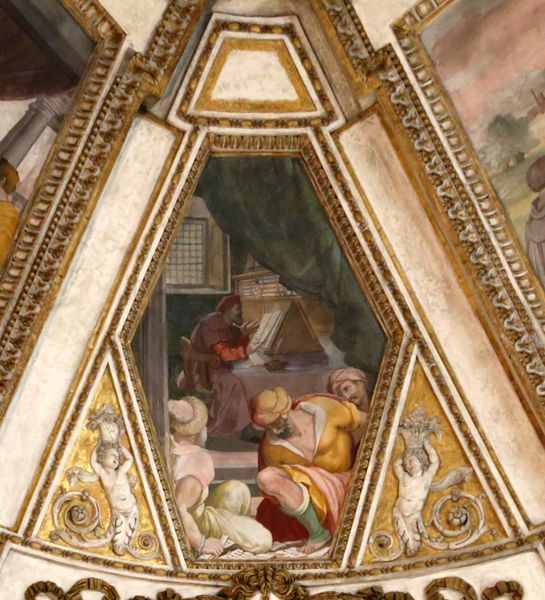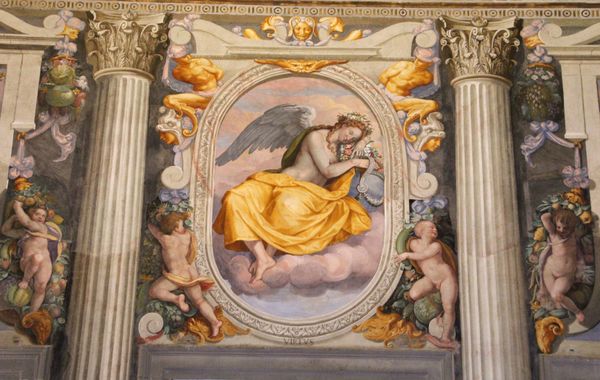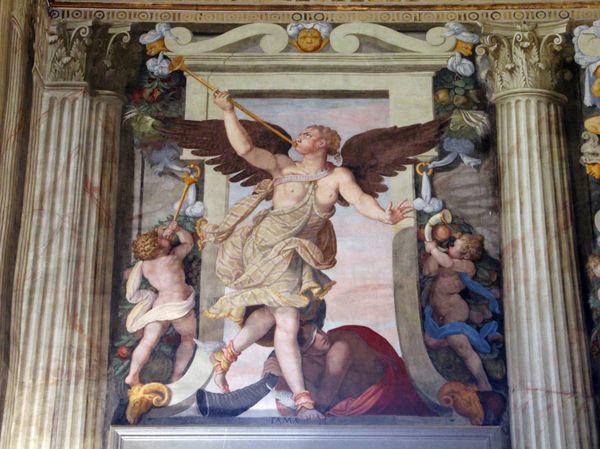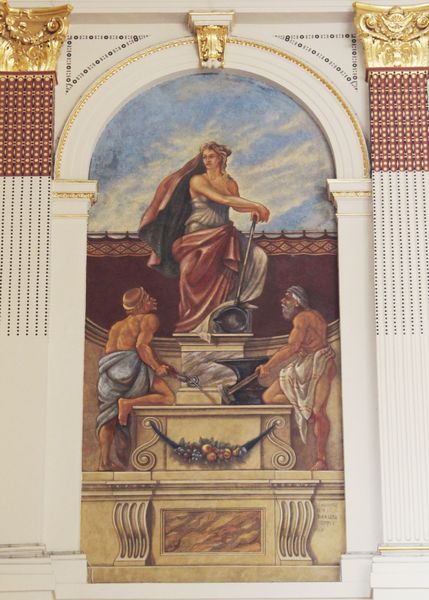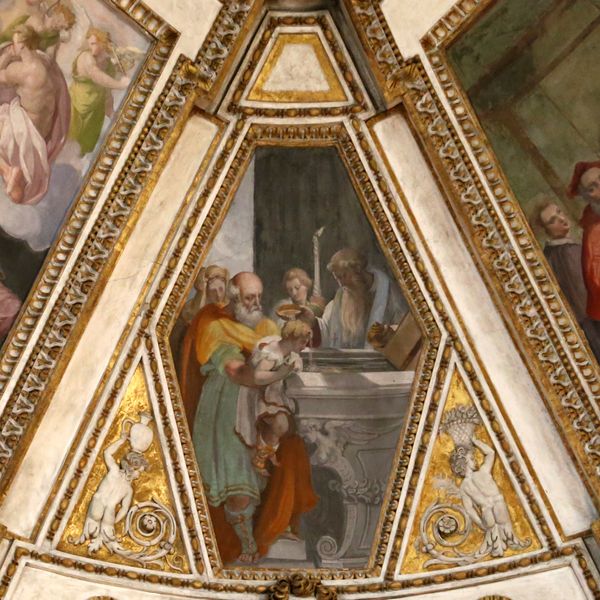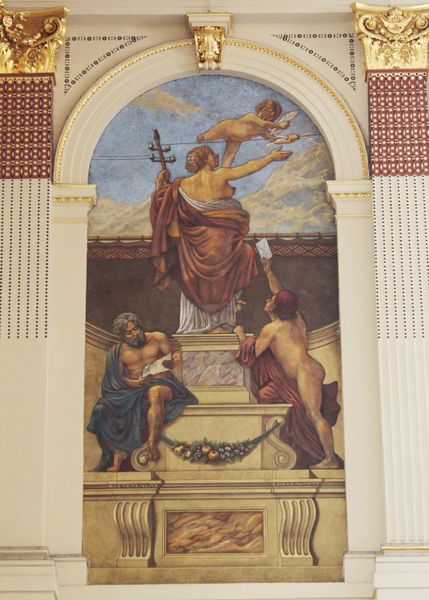
painting, fresco, mural
#
portrait
#
narrative-art
#
painting
#
classical-realism
#
mannerism
#
historic architecture
#
fresco
#
traditional architecture
#
history-painting
#
academic-art
#
italian-renaissance
#
mural
#
historical building
Copyright: Public domain
Curator: Here we have Alessandro Allori's "Stories of St. Jerome", a fresco painted in 1577 and currently located in Santa Maria Novella in Florence. Editor: It immediately strikes me as an intimate scene, despite its placement within a larger, presumably public, space. The woman at her toilette feels very personal, almost voyeuristic. Curator: Yes, Allori was clearly working within the Mannerist style. Look at how he uses the fresco technique. The pigments applied to wet plaster had to be exact. No pre-painting. Each giornata, each "day's work," a permanent chemical bond forged to create this luminous effect and create narrative elements. Editor: The woman’s attire—the way the golden cloth drapes, along with the garland of flowers she’s about to place on her head—reads almost as a pre-Christian fertility ritual. She is looking in the mirror so that she can arrange the floral crown on her head perfectly, like so many depictions of Venus preparing for the judgement of Paris or her wedding. This is vanity and sensuality intersecting with devotion, isn't it? Curator: A fair point. Consider also that this panel depicting Jerome—translator of the Vulgate Bible—might reveal more complex attitudes within the late Renaissance toward craft. Jerome, laboring over his translation, mirroring Allori at work, creating art by hand. Editor: Right, I see your point! These artists were steeped in humanist thought. Even this figure's adornment is part of a narrative woven from threads of classical mythology, re-interpreting older symbols in service of the evolving Church. Curator: It highlights a growing awareness of labor, an emerging merchant class eager for luxury and visual culture that Allori was both participating in and subtly critiquing. Frescoes weren't churned out mindlessly but constructed consciously. Editor: Allori successfully encapsulates layers of meaning here. What appeared at first glance as simple vanity opens up into a much richer consideration of both Christian virtue and earthly concerns. Curator: Exactly. The making here is also the meaning, each giornata testament to an evolving and deeply thoughtful approach to faith, beauty, and creation.
Comments
No comments
Be the first to comment and join the conversation on the ultimate creative platform.
